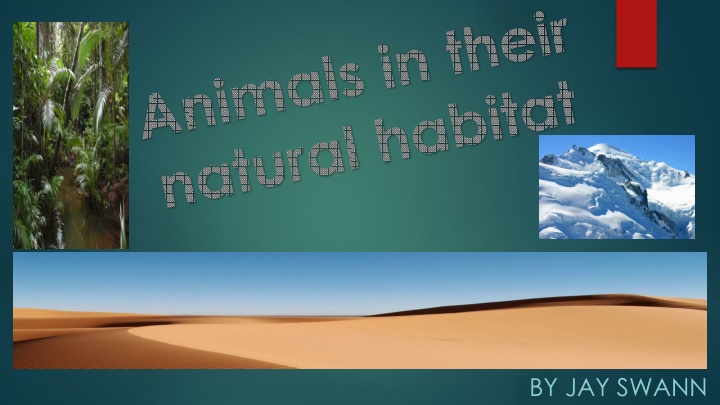
Animals in Natural Habitat: Climate Zone Impacts on Adaptations
Explore how climate zones influence animal adaptations in their natural habitats. Discover how animals in hot countries like camels and cold countries like polar bears have evolved unique attributes to thrive in their environments. Understanding these adaptations helps us appreciate the diversity of life on Earth.
Download Presentation

Please find below an Image/Link to download the presentation.
The content on the website is provided AS IS for your information and personal use only. It may not be sold, licensed, or shared on other websites without obtaining consent from the author. If you encounter any issues during the download, it is possible that the publisher has removed the file from their server.
You are allowed to download the files provided on this website for personal or commercial use, subject to the condition that they are used lawfully. All files are the property of their respective owners.
The content on the website is provided AS IS for your information and personal use only. It may not be sold, licensed, or shared on other websites without obtaining consent from the author.
E N D
Presentation Transcript
Animals in their natural habitat BY JAY SWANN
contents How climate zones affect animals Animals in hot countries Animals in cold countries
How climate zones affect animals Every organism has certain features or characteristics that allow it to live successfully in its habitat. These features are called adaptations ,and we say that the organism is adapted to its habitat. organisms living in differenthabitats need different adaptations. home
Animals in hot countries Camels have adapted to deserts in many ways Long curly eyelashes to keep sand and dust out. Thick bushy eyebrows to shade their eyes from the sun. Fur inside their ears to keep sand and dust out. Close their nostrils to keep sand out. Feet are soft and spread out to prevent sinking in the sand. Two toes on each foot joined by a tough web and leathery padded souls. Camels get most of the water they need from plants. home
Animals in cold countries Polar bears have adapted to Arctic in many ways a white appearance, as camouflage from prey on the snow and ice. thick layers of fat and fur, for insulation against the cold. a small surface area to volume ratio, to minimise heat loss. a greasy coat, which sheds water after swimming. home





















